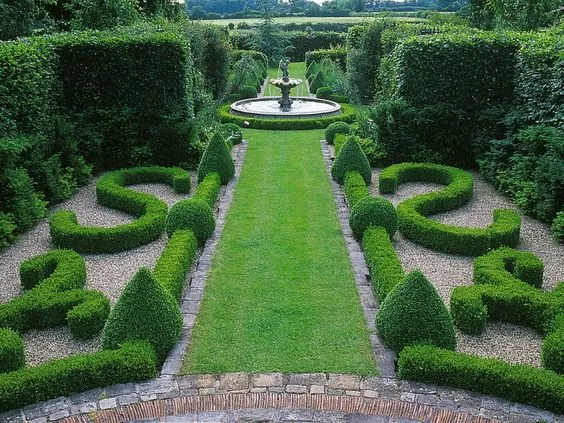Some Known Questions About Landscapers.
Some Known Questions About Landscapers.
Blog Article
Landscapers Can Be Fun For Everyone
Table of ContentsExamine This Report about LandscapersLittle Known Facts About Landscapers.The 3-Minute Rule for LandscapersNot known Details About Landscapers Landscapers for DummiesLandscapers Can Be Fun For Anyone
- A yard feature where water is stood for by an aggregate stone product, generally a gravel or granite.- A stone or natural flagstone outdoor patio, course, or walkway built without a concrete base.- A stone keeping or complimentary standing wall developed without the use of mortar. A very proficient mason is needed for a dry pile rock wall surface. Many wall surfaces in Rose city are moist piled, even if they seem. - An underground framework that gather water and enables it to reduce percolate into the dirt around it.
Landscape design that is suitable with a sites' atmosphere in both appearance and sustainability without adverse effects to the environment. Bordering in the landscape is a line of separation that produces aesthetic rate of interest in the yard by separating one sector from an additional section.
Areas can likewise have a sensation of "room" supplied by trees, various other plantings, fences, or displays. The landscape near the access to a structure.
Unknown Facts About Landscapers

The component in a landscape style or location in a landscape that is meant to be most noticeable. The focal point can be a plant, stone, statuary, collecting space, or other landscape feature.
:max_bytes(150000):strip_icc()/look-up-look-down-photography--o7ASOHDV9E-unsplash-62ac6efd6d724c7abb7320fefe03b411.jpg)
Landscapers - The Facts
Rock product, either rounded or fractured, that is fairly small- generally 1" or less. Low plants that are permitted or motivated to spread out over a location. Can refer to any type of "difficult" garden aspects including statuary or rocks yet the majority of frequently is utilized to describe paths, outdoor patios, and walls.: Height distinction in between the degree of water in a pond (or the degree of the pump if it sits outside the fish pond) and the upper electrical outlet of water which impacts efficiency of the water pump in gph (gallons per hour). Thick bushes or trees that form a fencing, display, or border.
Fence boards that run flat, commonly made use of in modern or Japanese-inspired landscape layouts. Correct usage of imaginary lines can help the landscape feel attached to the home and various other components.
A more kicked back garden controlled by rounded instead of straight bed lines and a much less rigid framework. Typical PNW landscapes are informal. A plant that spreads greater than he said wanted, or right into environments where it does damage. Rose city has a checklist of intrusive plants that need to not be installed in landscapes because they can infect woodlands or rivers and be challenging to manage.
The Main Principles Of Landscapers
Can consist of head positionings and protection, pipe sizing, GPM specs, and products needed to install this system. Licensed specialist that creates landscapes, coached in design and architecture as well as in horticulture.
The professional who plans and establishes landscape tasks, generally at a domestic or small business level with the major layout incentive on plantings. Landscape designers generally have much less education than Landscape Architects and are not accredited. A finished landscape layout, outlining all elements for the brand-new landscape. This normally takes the form of an illustration theoretically.
Calcium product used to elevate the pH in soil, which will make it much less welcoming to moss (Landscapers). A water tight HDPE product used underneath fish ponds, streams and waterfalls click reference in water functions. Making use of many plantings of the very same range to fill out an area in the landscape. This can decrease upkeep and water usage in the yard.
A mix of cement, sand, and water that is used in rock stonework for establishing stones and joints. A layer of compost or bark dust applied at the base of a plant. A mass planting of moss. A plant that existed in a geographic place prior to individuals began altering the landscape.
Landscapers Things To Know Before You Buy
Just how the garden or a yard element is organized in connection to an existing or new see here now attribute or to an instructions. Lawns that are not trimmed but expanded in landscapes as perennials.

Plants that offer seasonal rate of interest and then pass away back in the winter. Cold period grass that is the most common lawn yard in Rose city, OR and the rest of the PNW.An open roofed framework over a patio or other landscape feature.
The most usual landscape crushed rock in the PNW. Location of the landscape designed to deal with rainfall water till it can saturate into the ground.
Structure constructed from wood, concrete, leading stones, bricks or various other materials for stabilizing inclines and avoiding excessive erosion. Narrow gutter. Producing a yard attribute being composed largely of stones with plantings that match and can flourish in the rocky setting. Sprinkler head style that revolves a stream of water throughout an area.
Top Guidelines Of Landscapers

Report this page